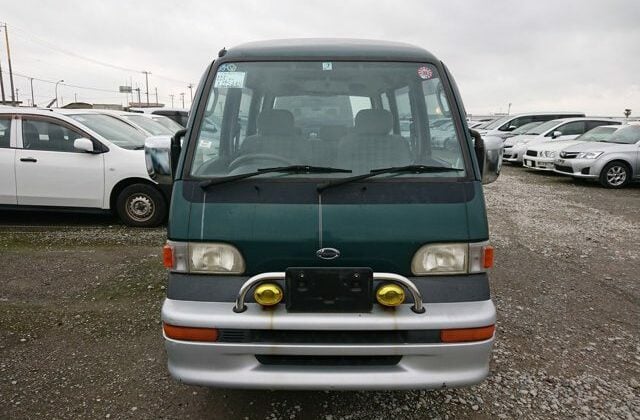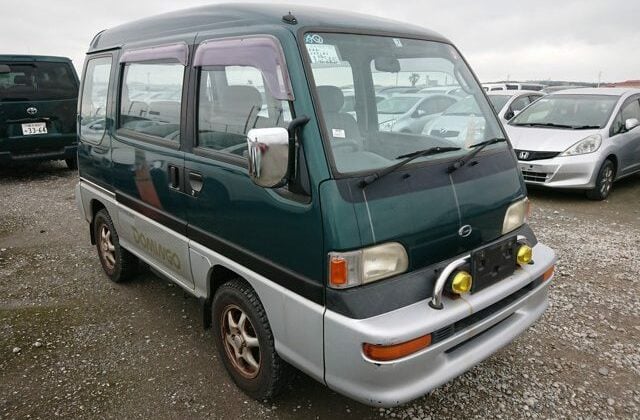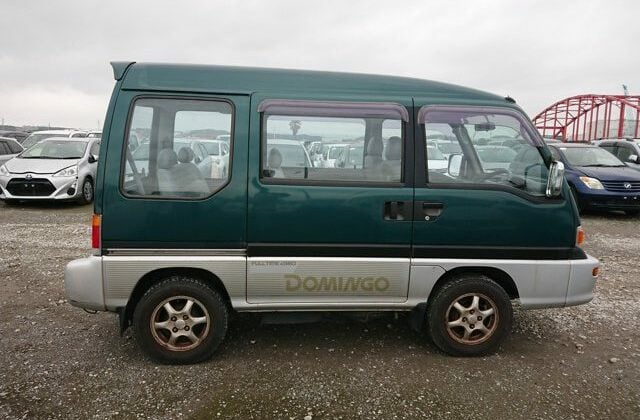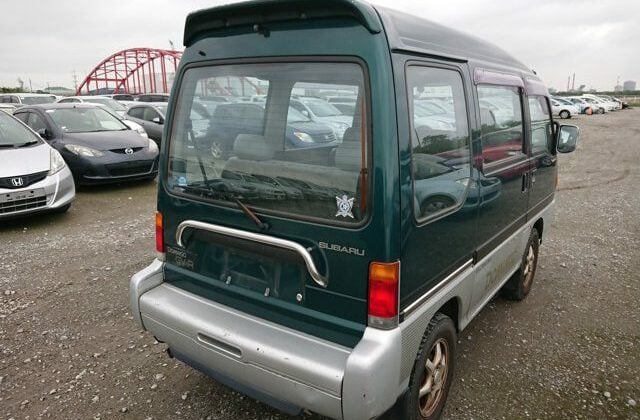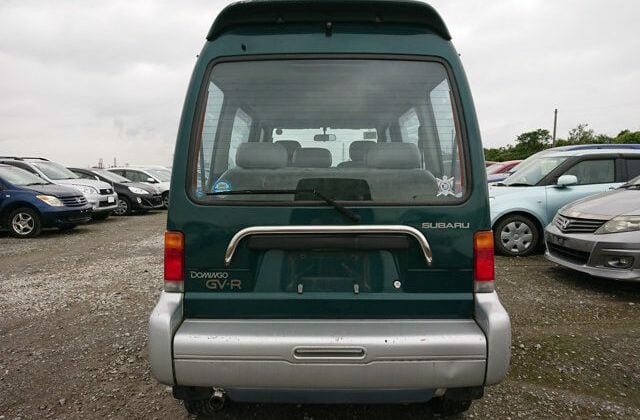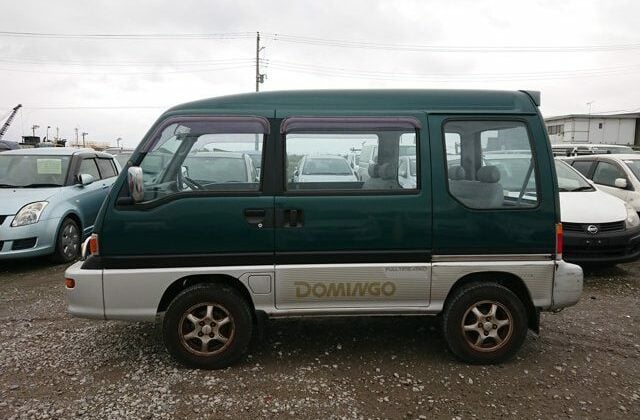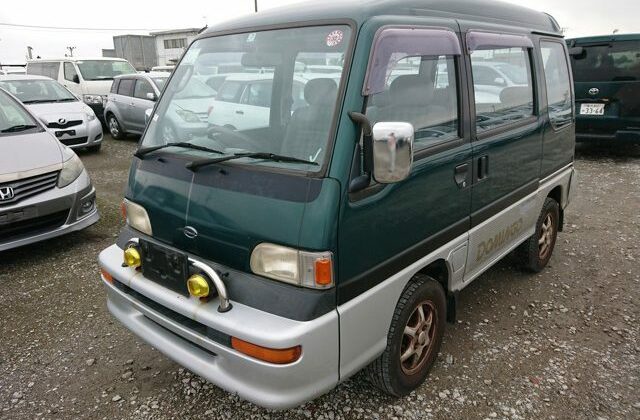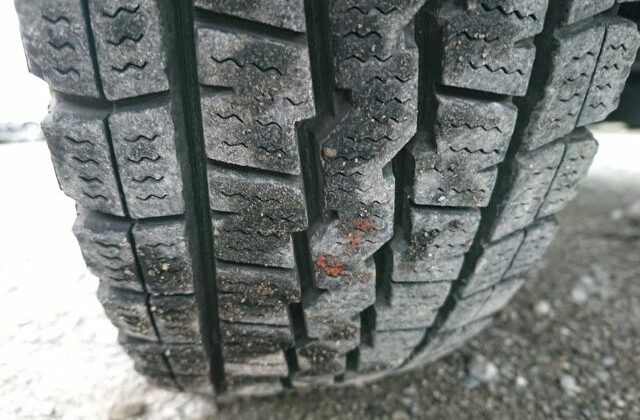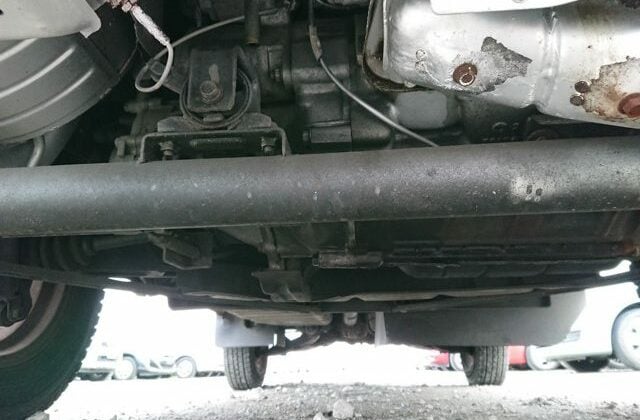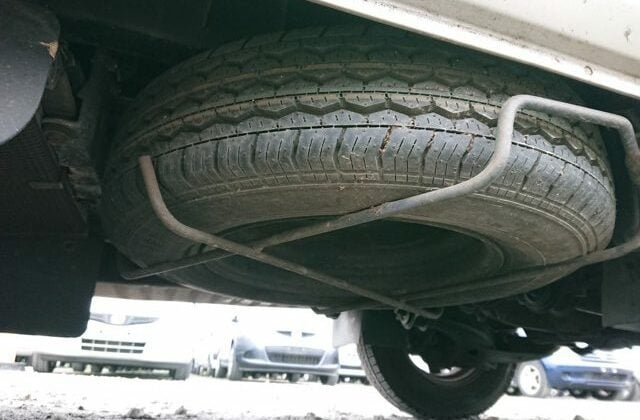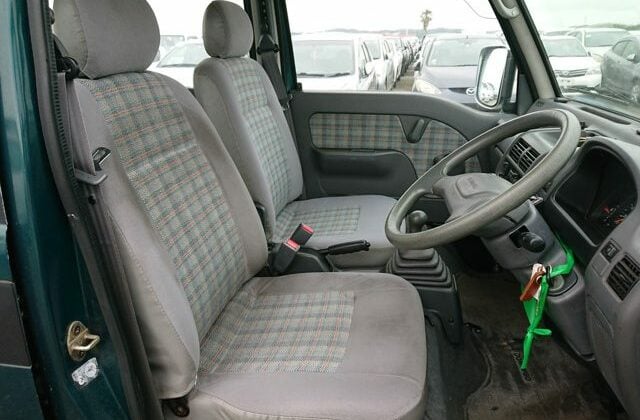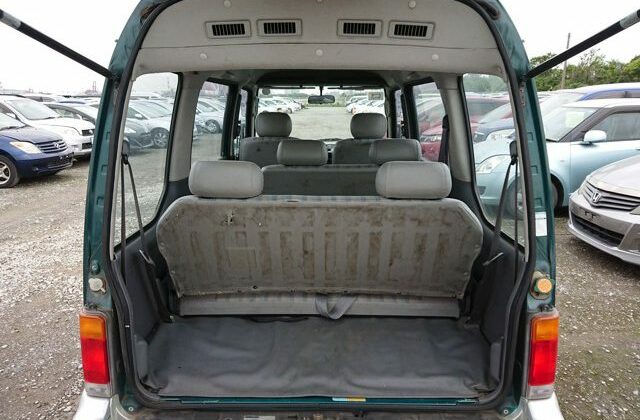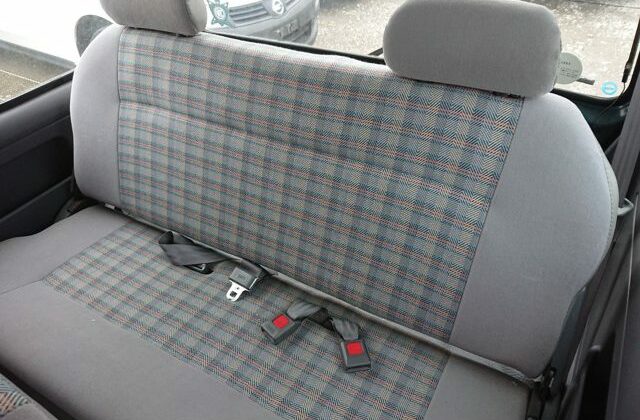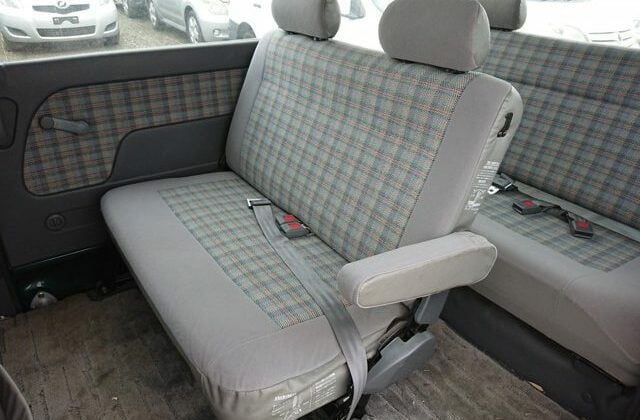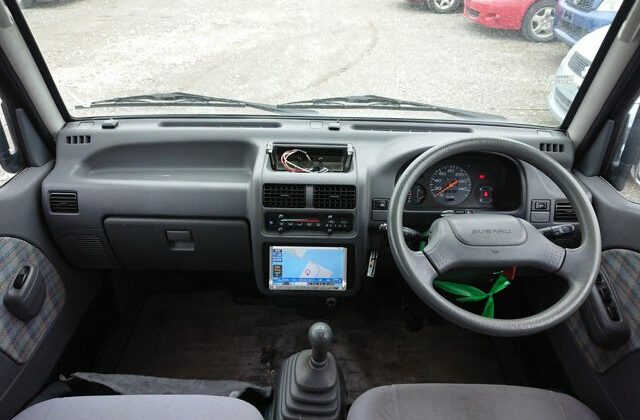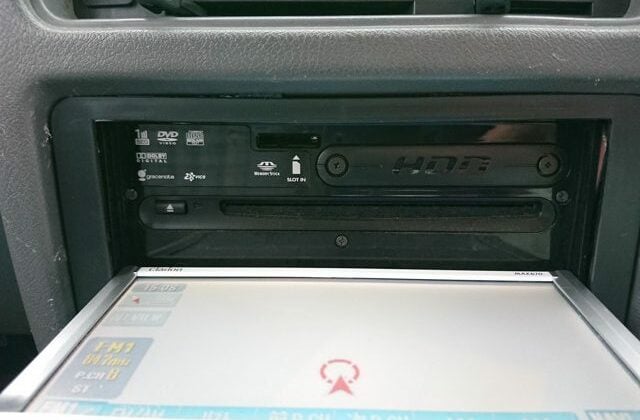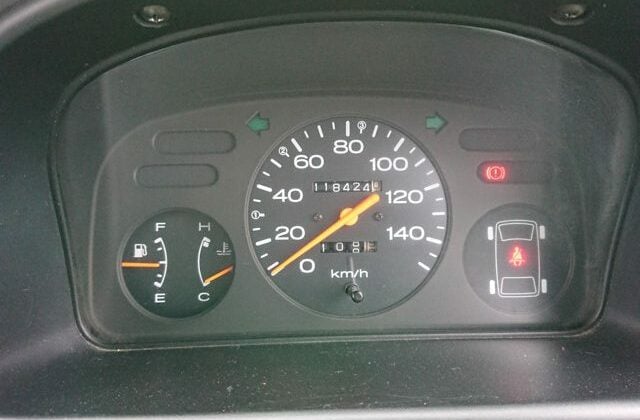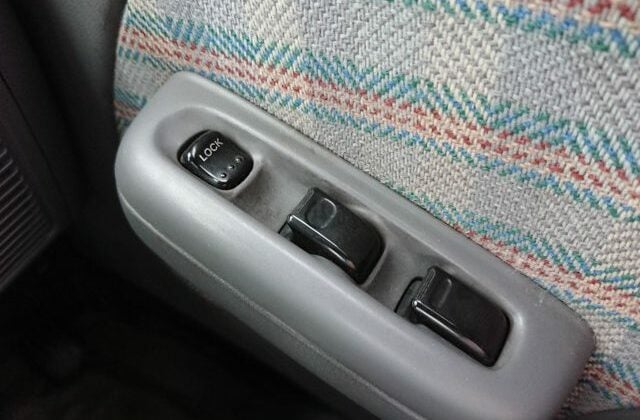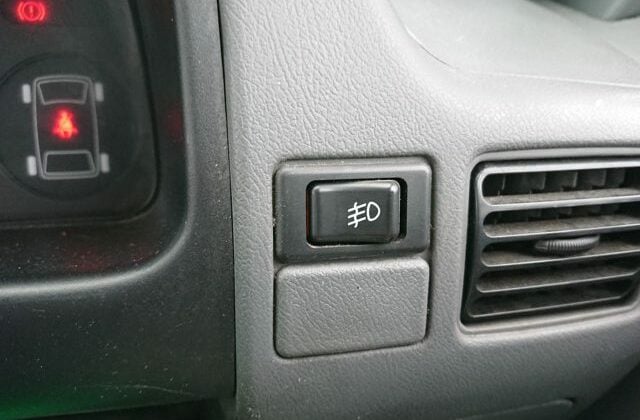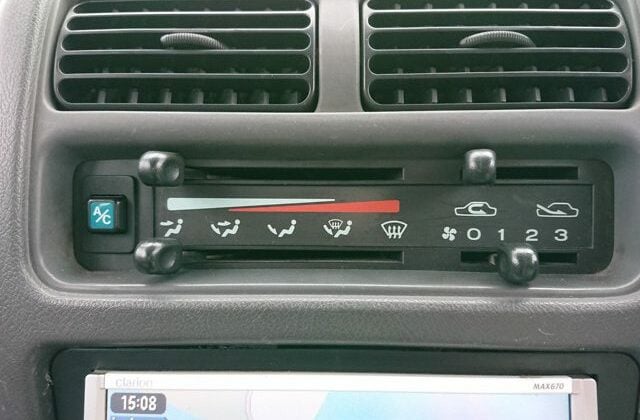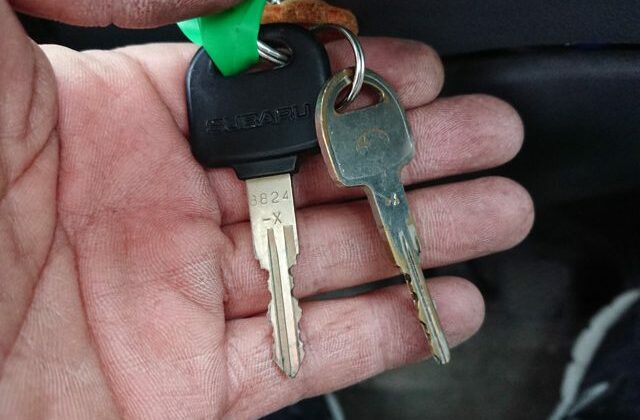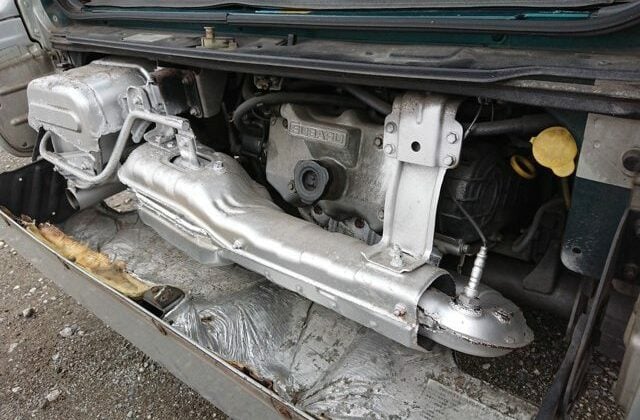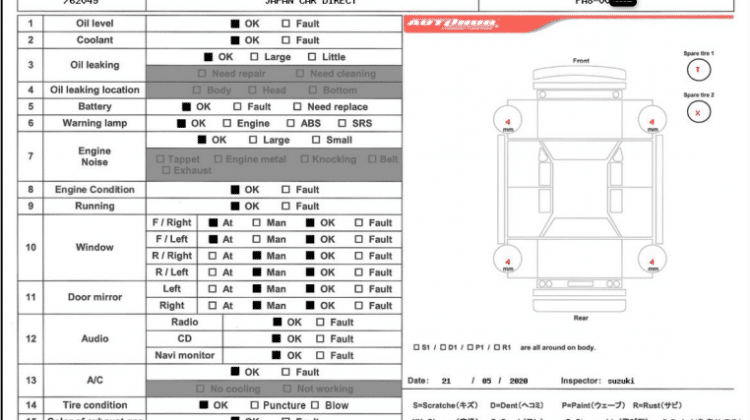Subaru Domingo
Sold and Exported
Actually, the first time I saw a seven passenger Subaru Domingo micro van was not here in Japan, it was in England, in my office parking lot. “Nice looking little van,” I thought to myself. “Hmmm…….Big windows for good visibility….I like that….high seating position, can see over other cars on the road…that’s good…..But…What?…Am I looking at seven full-sized seats in that little guy?…I am indeed! Well, Bob’s your uncle. I’d go for one of those. Charming little fellow.”
That little “cab-over micro-van,” to give it its correct technical type classification, was not a private import from Japan: Subaru themselves marketed the vehicle in the UK (where it was called the Subaru Sumo) and also in continental Europe (where they called it the Libero). But I never saw many of them there.
After I came to Japan, of course I saw many examples of the Domingo’s Kei class brother, the Subaru Sambar Diaz Van, all over the place (in fact, I bought one), but there were lots of the “white number” Domingos on the roads here, too.
What makes the Domingo Van different from the Sambar Van? And what’s all this “white number” stuff?
Very simply, there are two main classifications for private cars in Japan: The “Regular Class” vehicles which have white license plates, and the “Light Class” vehicles that have yellow license plates. The Light Class are the famous Kei Cars, including well-known Kei Trucks like the Daihatsu Hi-Jet and Suzuki Carry, the Mitsubishi Mini Cab, and, of course, the Subaru Sambar Truck itself. Kei vehicles have certain limitations on engine size (660cc max), a limit on engine horse power, which the makers ignore and the government ignores that they ignore it, so we are all happy (no limit on engine torque), and limits on the exterior dimensions of the vehicle. From March of 1990 to October of 1998, Kei vehicles could be up to 3,295mm long and 1,395mm wide. After October of 1998 they became 100mm longer and 80mm wider. Browse our site to find more about Japanese Kei vehicles, including kei trucks.
For more info and reviews of the best Kei trucks to import from Japan, have a peek at our blog. And if you want to see what happens in the sports car world when Kei sports cars ignore the power limits, have a look on our blog about Japanese sports cars.
Check out those pocket rockets! I had one of those, too. Man, was it great!
Unlike Kei vehicles, Regular Class vehicles have no limits on engine size or exterior dimensions, although there used to be a limit on horse power which, you guessed it, the car makers ignored and the government ignored that they ignored it, and we were all very happy driving around in our 300 horsepower station wagons like my Subaru Impreza WRX STi Version III, thank you very much.
The Domingo, being a Regular Class vehicle, is free from Kei limitations and so Subaru made some nice little changes that our customers who have imported a Domingo through us here at Japan Car Direct appreciate very much. First off:
Bigger Engine
Rather than running a 660cc straight four (the EN07 “Clover Four”) as in the Sambar, The Domingo has the EF12 1.2 liter straight three. The EF12 puts out 61ps at 5,600rpm and 9.8 kg/m of torque at a nice low 3,600rpm; and it’s obviously a less stressed, less highly tuned unit than the Sambar’s EN07 which puts out 46ps at 6,400 and 5.6kg/m of torque at 4,800rpm in N/A trim, and 55ps at 6,200prm with 7.1kg/m of torque at 3,800 in supercharged form.
An important take away for us from these figures is that the Domingo’s larger engine has the luxury of being a bit lazier than the Sambar’s power plant and can run a fairly low 9.1:1 compression ratio which means that it is more tolerant of low octane gas and crappy gas in general. You can also expect it to have a rather longer engine lifespan, but even the 660cc motors last very well, indeed. I’m approaching 200,000 km in my Kei car and no problems or significant signs of wear yet.
Rubber Baby Buggy Bumpers
Another benefit of being freed from Kei car limits is that the Domingo could be longer that the Diaz, and Subaru used this freedom to mount bigger front and rear bumpers on the Domingo for added safety. And with forward control vehicles like these, the more crumple space and strong steel we can have up front, the better. Just look at a side view photo of each van and you’ll immediately see the difference in bumper size and thickness. Having said this, however, forward control van-type vehicles give us very good forward visibility which is itself a major safety plus.
“Sociable Seating”
Another really neat feature that you’ll get if you decide to import a nice used Subaru Domingo from Japan rather than a Sambar Diaz (although I confidently recommend either van) is what I have nicknamed “sociable seating.” The 7-seat Domingo gives a cozy but not cramped interior and, when you feel like chatting up your passengers, you can turn the two front seats (both driver and passenger seats) around 180 degrees and you can face rearward to be face to face with the people sitting in the middle row of seats. Totally sociable, eh? (But, like, obviously you only do this when you’re parked, right? Not when you’re driving, guys, no matter how good looking she is.)
So have a look at the photos we have here and you’ll see why I’ve always been charmed by Subaru Domingos (and Subaru Sambar Vans).
(Interestingly, the Domingo is not the only “white number” version of a Kei vehicle. Many models of the excellent Kei class Suzuki Jimny also came with larger engines and larger external dimensions.)
Two little points to keep in mind about these very original Subaru micro vans: 1) I don’t really recommend the CVT (continuously variable transmission) auto transmission option. The CVTs don’t seem to last as long as I’d like and some of their quirky flaws can be difficult to diagnose. The manual transmissions on Domingos and Sambars are rock solid. Stick with manuals. 2) When you want to pull the spark plugs, be sure to first clean well around the area where the plugs go into the cylinder head; either vacuum it out or blow high pressure air around there to blast away all the dust and grit that builds up in and around the plug wells. This happens because the engine is laid on its side with the plugs facing rearwards, and so, as you drive along, the air behind the car is all filled with dust and grit and such, a bit of which makes its home around your plugs. So, with plugs, blow out or vacuum out before you pull out.
If you’re thinking: “I want to import a clean used Subaru Domingo (or Sambar) from Japan,” just contact us here at Japan Car Direct and we’ll be very happy to find you a fine charming, practical, and good condition micro van.


